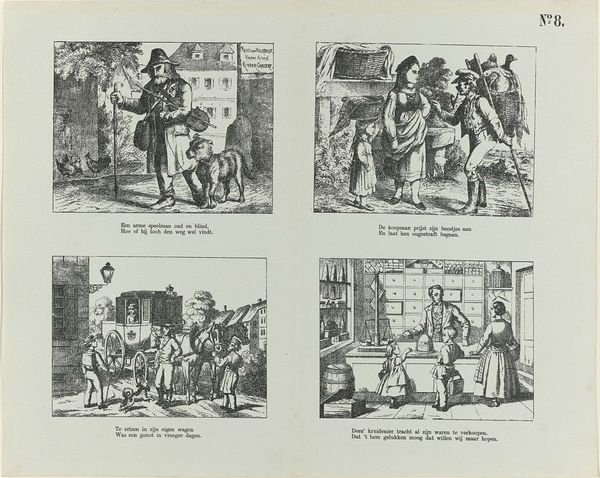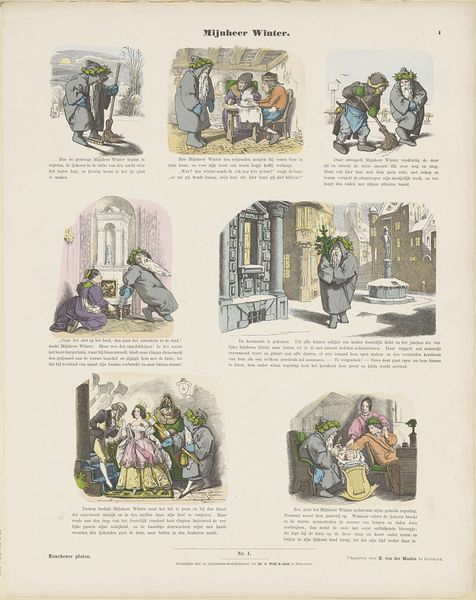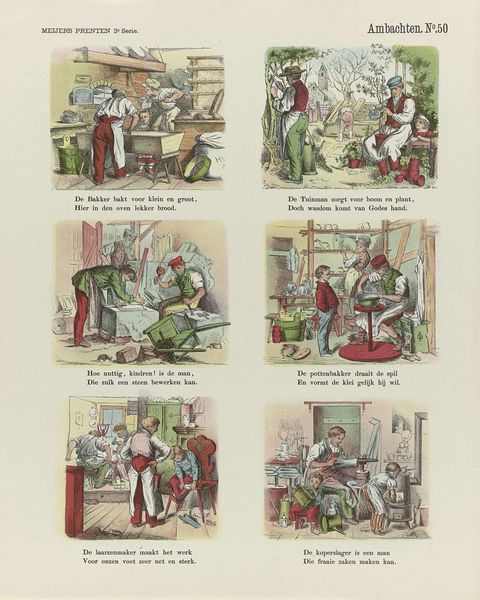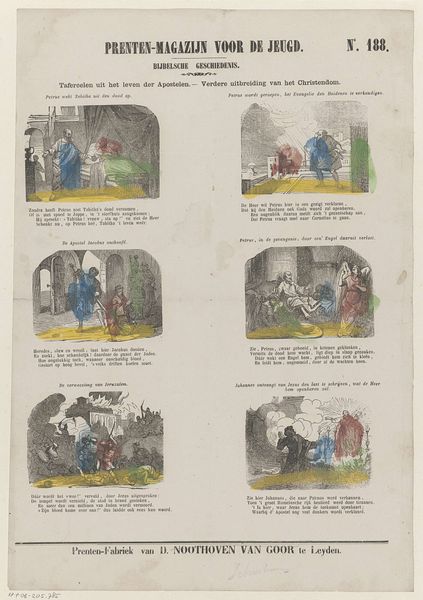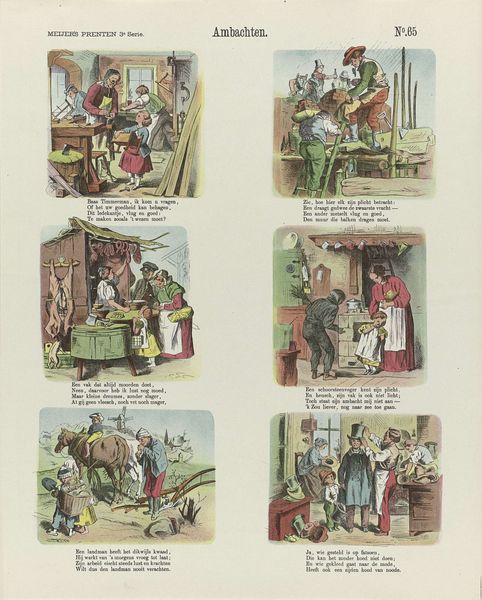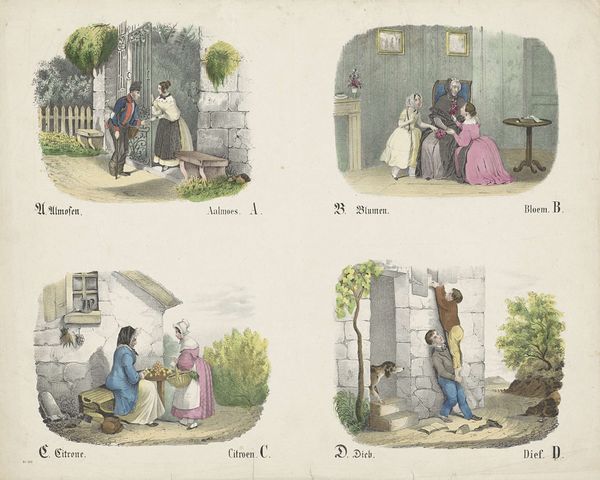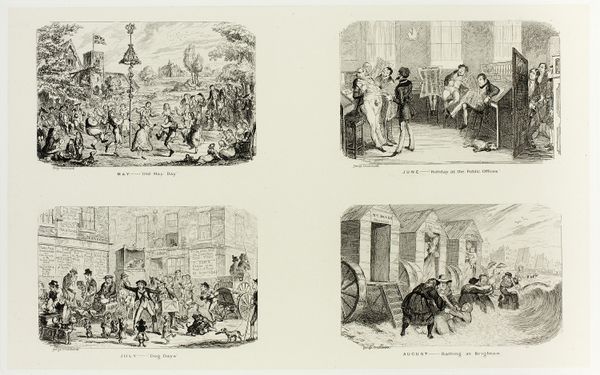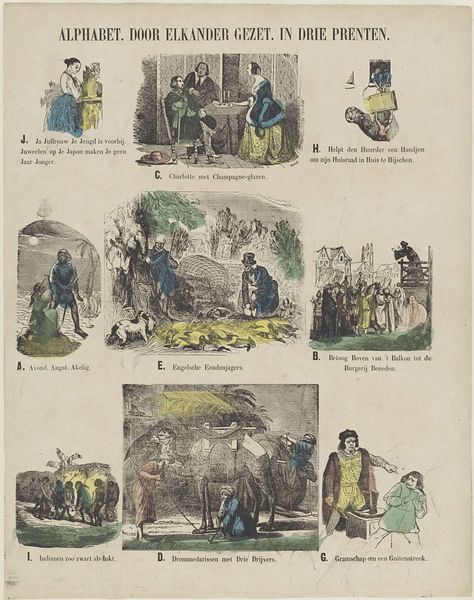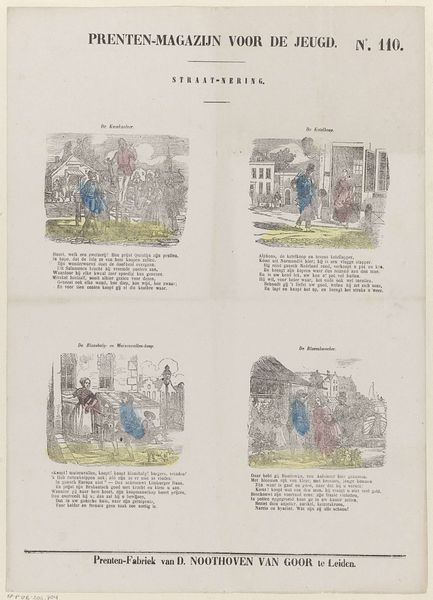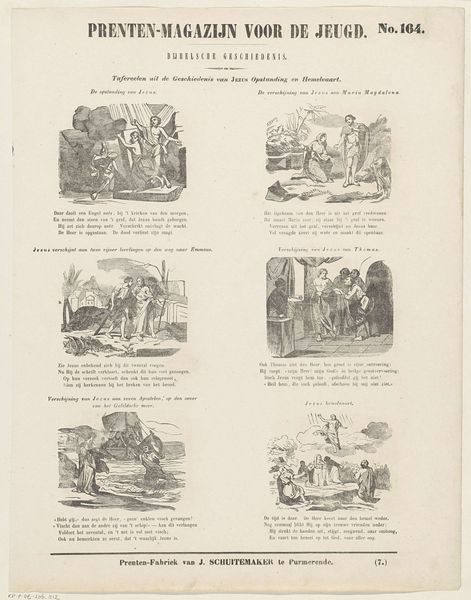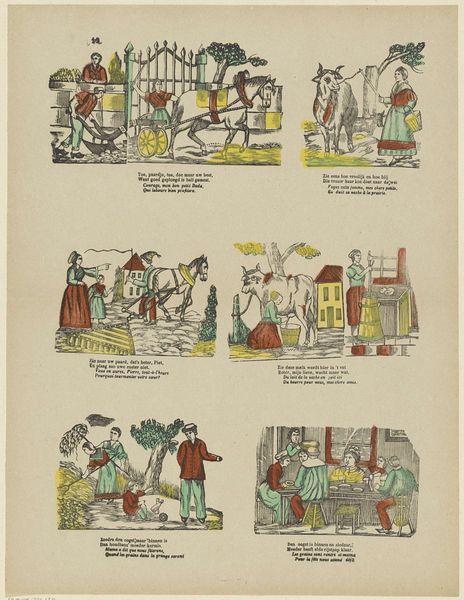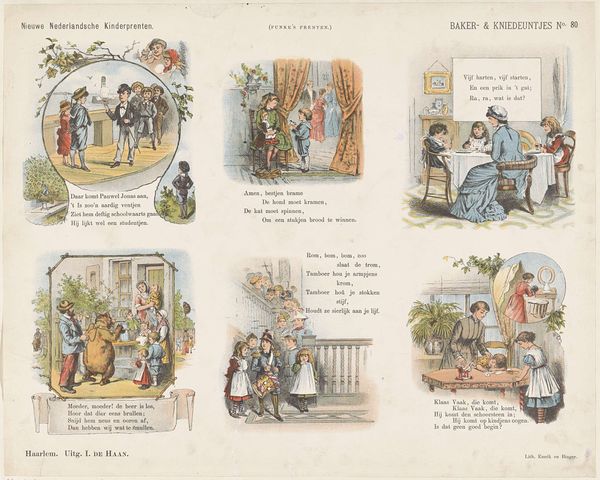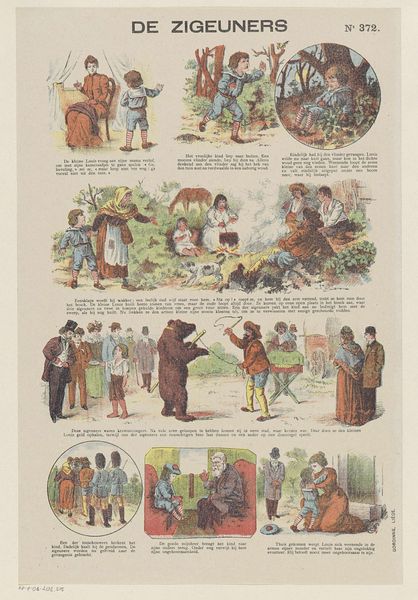
collage, lithograph, print
#
collage
#
narrative-art
#
dutch-golden-age
#
lithograph
# print
#
genre-painting
Dimensions: height 340 mm, width 426 mm
Copyright: Rijks Museum: Open Domain
Curator: This is a fascinating example of 19th-century printmaking. This lithograph and collage is entitled "Beroepen," which translates to "Occupations" in English. It dates back to 1873 and is a product of the Dutch firm De Ruyter & Meijer. Editor: My initial reaction is a sense of narrative complexity, perhaps also fragmentation. The way it's organized into discrete vignettes really focuses my attention; it almost feels like looking at stills from an old film or comic strip before those forms really solidified. What is most striking about that design to your eyes, as a historian? Curator: For me, the social commentary embedded within this visual organization is most striking. The juxtaposition of different trades and social classes offers insights into the societal structure of the time, pointing to a budding capitalist economy that may or may not include workers' rights and dignity. How does this artwork, for you, engage with modern discourse around identity, class, and labor? Editor: Well, seeing figures of different statuses—a wealthy traveler versus what looks like an itinerant vendor— immediately prompts questions of accessibility, who has access to travel and comfort versus who is stuck moving from place to place, maybe struggling just to make ends meet. These figures carry different burdens and embody disparate privileges. And, more generally, I can see it as an example of gendered and classed assumptions, about the distribution of work and about social hierarchy that could potentially provoke conversation about today. Curator: Absolutely. It prompts consideration of our labor systems: How do we place value on different types of work? Does that structure have to do with capitalist valuations of labor? Editor: It definitely speaks to how imagery, even ostensibly neutral depictions of work, carries within it political and social undercurrents. Curator: Yes, how those choices either subvert or solidify normative standards is interesting here, too, opening it up to conversations about the exploitation that can happen even through seemingly innocent depictions of work. So even though it's a 19th-century print, it is ripe for analysis today through multiple intersectional lenses. Editor: A point well-made. Looking at these figures now reminds me to always ask, ‘Who gets to be seen?’ and, just as crucially, ‘Who is doing the looking, and under what constraints?’
Comments
No comments
Be the first to comment and join the conversation on the ultimate creative platform.
